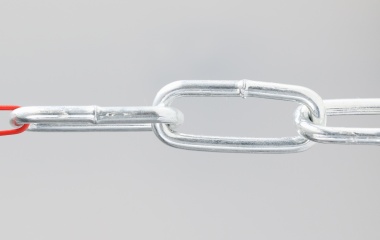
Each of the five books of the chumash has a unique theme – otherwise there would be no need for five books. Breisheet discusses why there is a need for a special nation and, from chapter 12 onwards, revolves around who will, and who will not, be part of this nation. Shemot is the story of redemption of the Jewish people and Vayikra contains a set of laws (and almost no narrative) of purity, impurity and holiness – enabling us to become a holy nation and kingdom of priests. Bamidbar focuses on the failure of the generation that left Egypt to fulfil their mission and sefer Devarim details the preparation of the people for entry into the Land of Israel[1].
It is for this reason that the many mitzvot in sefer Devarim are nationalistic mitzvot, those relating to the Land. These include setting up a court system, appointing a king, and the mitzva of Hakhel, the gathering of the entire nation once in seven years. It is why the chagim with which we conclude the parsha mention only the pilgrim holidays of Pesach, Shavuot and Sukkot. It is on these holidays that the nation gathers in Jerusalem. There is no mention of the more personal holidays of Rosh Hashanah and Yom Kippur.
If this assumption is correct (and it is) then it sheds “new” light on certain of the mitzvot of sefer Devarim that at first glance have little to do with the Land of Israel. These would include the proclamation of faith and the many mitzvot of the shema, marriage and divorce, honest weights, shiluach hakan, the sending away of the mother bird, and returning a lost object, to name but a few. But we will leave those for another time and discuss a mitzva that appears in our parsha.
“We are obligated to be careful with regard to the mitzva of tzedakah to a greater extent than all [other] positive commandments, for tzedakah is [the] identifying mark of a righteous person, a descendant of Avraham, our patriarch” (Rambam, Laws of Gifts to the Poor 10:1). The mitzva of tzedakah is more important than shofar, more important than mezuzah, more important than prayer – it is, the Rambam declares, the most important positive mitzva in the Torah. Along with mishpat, justice, tzedakah is why G-d chose Avraham to found a new nation under G-d (see Breisheet 18:19).
The actual mitzva of tzedakah – that is, to offer financial support to those in need[2] – appears twice in the Torah. It first appears in parshat Mishpatim indirectly. The Torah instructs that “if[3]” we lend someone money, we are not to collect interest (Shemot 22:24). This is part of the larger civil code of laws given on the heels at Sinai linking Divine revelation to our obligation to our fellow man.
In parshat Re’eh, the Torah much more directly commands that we open our hearts and our hands to help our fellow man in need. That this mitzva is linked to the Land of Israel is evident not only from its placement in the book of Devarim, but from the fact that the Torah explicitly links tzedakah to the Land of Israel by making it part – a detail, if you may – of the laws of Shmitta.
The laws of Shmitta first appear in sefer Vayikra[4], where we are told that the land must lie fallow every seven years and that one must allow all – even the non-Jew (see Rashi, Vayikra 25:6) – to enter one’s field and take of the produce. In sefer Devarim, the Torah develops this theme further by noting that a creditor may not ask a debtor to repay a loan after the shmitta year has passed[5]. It is here that the Torah tells of the mitzva of tzedakah, warning that one may “not harden one’s heart” and refrain from giving tzedakah out of fear that “karva shenat hashmitta, the shmitta year is coming” and one may not get one’s money back. Rather, one must “open one’s hand” and help the needy despite the risk involved[6].
The mitzva of tzedakah is both a mitzva incumbent on the individual and a mitzva incumbent on the community – or, more precisely, on the nation. The manner in which one is willing to help another says much about a person; the manner in which a nation helps those in need says much about that society. Avraham was chosen by G-d to found the nation of Israel because he will teach his children and his household “that they should keep the way of the Lord to perform tzedakah umishpat, righteousness and justice” (Breisheet 18:19). Our becoming sovereign in our homeland allows us to elevate the mitzva of tzedakah as a defining character of the Jewish people. Is it any wonder that Yishayahu prophesizes (1:27) that our return to Zion will be through the merit of the mitzva of tzedakah?
[1] Yet, at the same time, the actual mitzva to live in Israel is recorded at the end of sefer Bamidbar. While sefer Bamidbar describes our failure to enter the Land, the Torah wants to stress the temporary nature of that failure. The generation that left Egypt would not enter, but the second generation would. This same reason explains why the story of the meraglim is immediately followed by the mitzvot relating to the Land, a point noted by Rashi.
[2] Tzedakah means righteousness and encompasses much more than giving charity – but we refer here to the monetary aspect, a most important component of the mitzva of tzedakah.
[3] While the Torah uses the phrase im, meaning ‘if’, implying that lending money to another is optional, our Sages noted that in fact the word im in this context means ‘when’, such that lending money is an obligation (for those who can afford to do so). As to why the Torah does not say what it means, the MaHaRal beautifully explains that we should help those in need not because we have to but because we want to. One should perform one’s obligations to one’s fellow man voluntarily (Gur Aryeh, Shemot 20:22).
[4] Why that is so, we will have to leave for another time.
[5] There is a misconception that the loan is fully cancelled by the shmitta year. That is not true. A debtor may – and presumably should – repay the loan even after shmitta. What is forbidden is for the creditor to demand their money back.
[6] What is clear from both of these sources is that the mitzva of tzedakah is fulfilled through the giving of loans, not merely giving a handout. The former provides the necessary capital so one can be self-sufficient, whereas the latter runs the risk of being a never-ending drain on society.
The crucial support given to our institutions of learning is a fulfilment of the mitzva of Talmud Torah and not of tzedakah.



